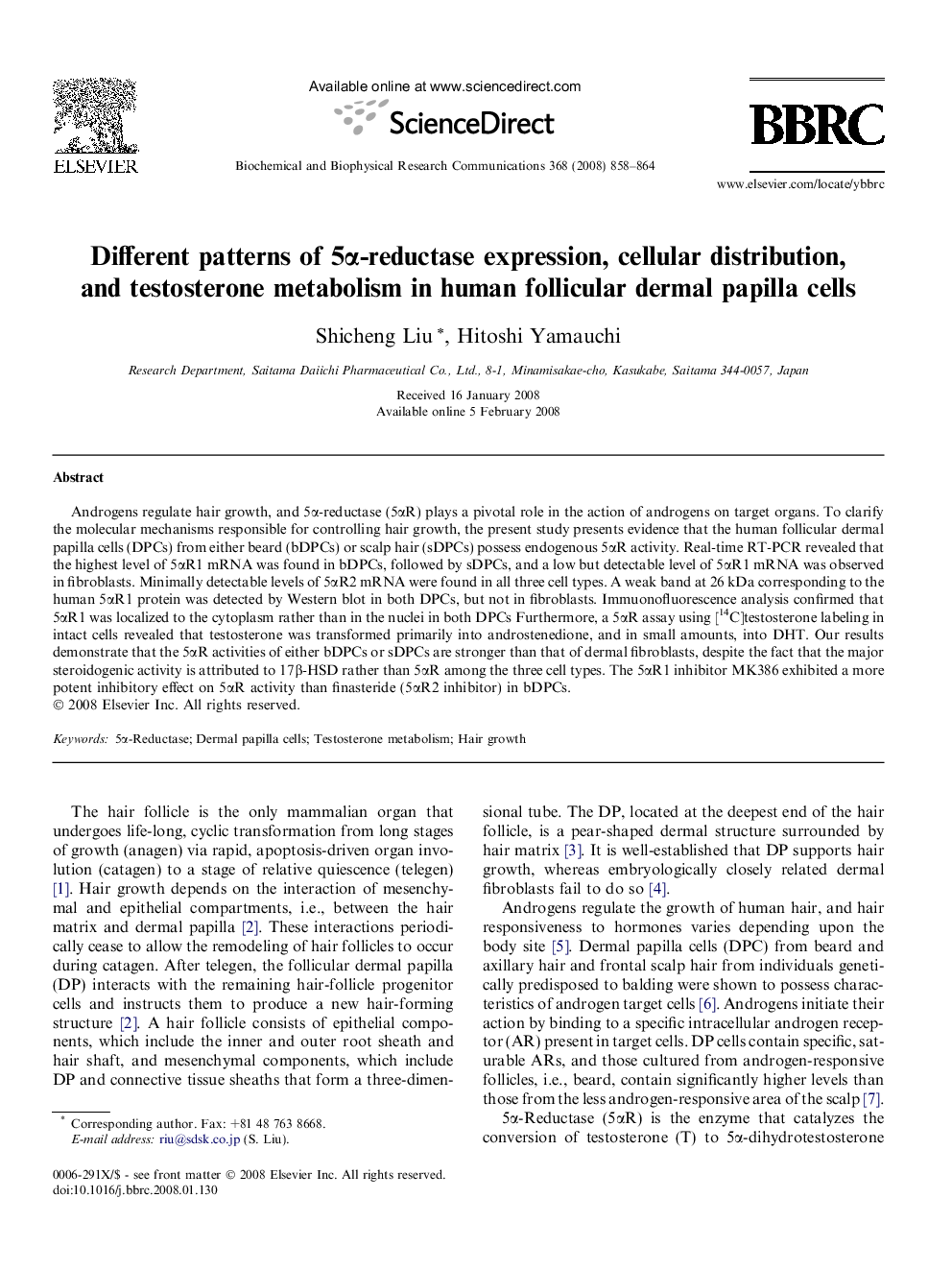| کد مقاله | کد نشریه | سال انتشار | مقاله انگلیسی | نسخه تمام متن |
|---|---|---|---|---|
| 1936124 | 1050684 | 2008 | 7 صفحه PDF | دانلود رایگان |

Androgens regulate hair growth, and 5α-reductase (5αR) plays a pivotal role in the action of androgens on target organs. To clarify the molecular mechanisms responsible for controlling hair growth, the present study presents evidence that the human follicular dermal papilla cells (DPCs) from either beard (bDPCs) or scalp hair (sDPCs) possess endogenous 5αR activity. Real-time RT-PCR revealed that the highest level of 5αR1 mRNA was found in bDPCs, followed by sDPCs, and a low but detectable level of 5αR1 mRNA was observed in fibroblasts. Minimally detectable levels of 5αR2 mRNA were found in all three cell types. A weak band at 26 kDa corresponding to the human 5αR1 protein was detected by Western blot in both DPCs, but not in fibroblasts. Immuonofluorescence analysis confirmed that 5αR1 was localized to the cytoplasm rather than in the nuclei in both DPCs Furthermore, a 5αR assay using [14C]testosterone labeling in intact cells revealed that testosterone was transformed primarily into androstenedione, and in small amounts, into DHT. Our results demonstrate that the 5αR activities of either bDPCs or sDPCs are stronger than that of dermal fibroblasts, despite the fact that the major steroidogenic activity is attributed to 17β-HSD rather than 5αR among the three cell types. The 5αR1 inhibitor MK386 exhibited a more potent inhibitory effect on 5αR activity than finasteride (5αR2 inhibitor) in bDPCs.
Journal: Biochemical and Biophysical Research Communications - Volume 368, Issue 4, 18 April 2008, Pages 858–864